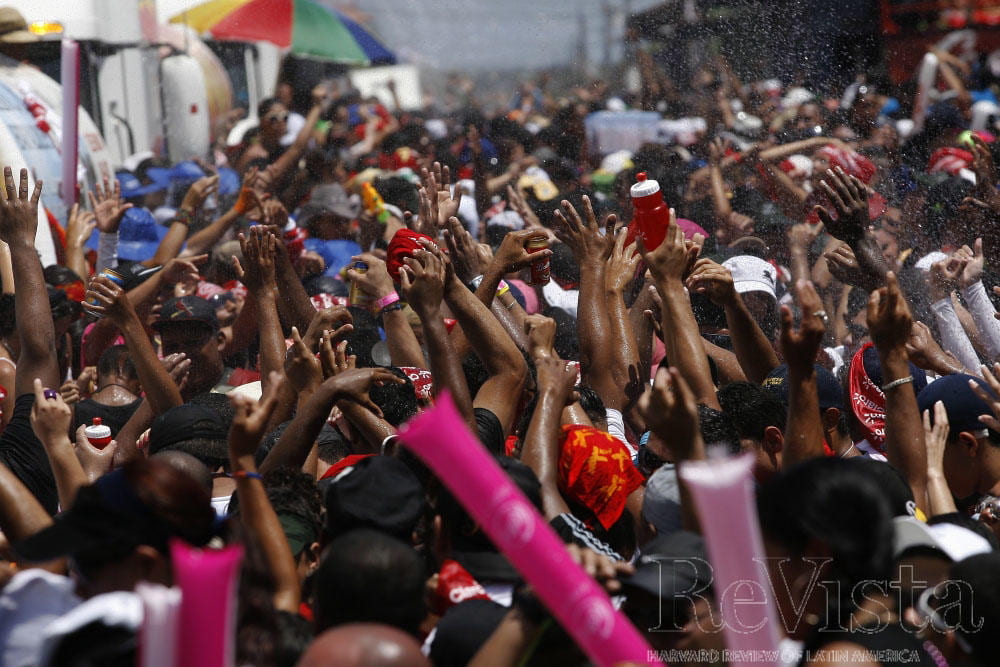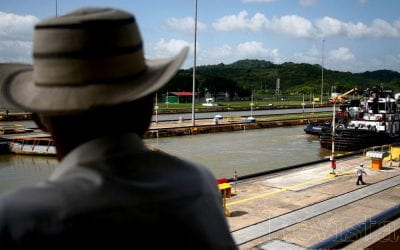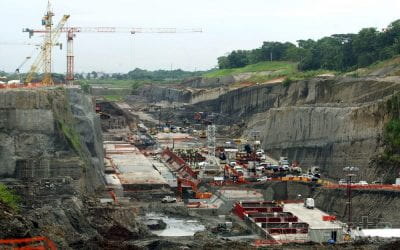Panamanian Culture
A Hot Hybrid
Panamanian culture has roots in at least three continents. It’s a heterogeneous culture, embracing elements from various communities that coexist peacefully, if noisily, within one of the smallest countries in Latin America, both in terms of land mass and in population. It is the result of a blending process that has been going on for five centuries, a hybrid that keeps evolving. Singling out the primary ingredients of this blend seems like a good way to decode it.
GENES DON’T LIE
In the year 2000, the Instituto del ADN y del Genoma Humano de la Universidad de Panamá (University of Panamá’s Institute of DNA and the Human Genome) did a study to determine what percentage each ethnic group had contributed to the genetic pool in the 500 years since the conquistadores disembarked. The researchers came up with a composition that is 39.4 percent indigenous Indian, 31.2 percent Caucasian, and 29.4 percent black. The most salient characteristics in Panamanian popular culture, as observed today, can be traced to these groups.
The footprints of the conquistadores (Spanish Caucasian) are the most obvious in Panamá’s popular culture. Indigenous dialects are spoken among the Guna, Ngabe, Emberá and Wounan Indian groups—which number fewer than 200,000—but Spanish is the undisputed lingua franca. Besides their language, Spaniards imported their religion. In a 2012 national survey, 69.9 percent of the total population declared itself Catholic, followed by 16.4 percent evangelicals and 2.5 percent Adventists. At a personal level, Panamanians might be pragmatic, even flexible, but they respect the Church and its representatives and follow the rituals: family life follows the sequence from one sacrament to the other, with boys and girls expected to move from baptism and communion to confirmation and wedding. Regional festivities—the patronales—have a large pagan component, including binge drinking and dancing, but they center on a locally venerated saint honored with flowers, gifts and processions before the partying. Even the greatest national and eagerly awaited yearly celebration—the carnaval—is held preceding Lent.
The national dance, el tamborito, is of Spanish ancestry (although with obvious influence from native Indian dances), as is the much admired pollera. An off-the-shoulder top with a full skirt embellished with embroidery, lace and ribbons, thepollera is a tropical adaptation of the dresses that Spanish women wore in the 15th and 16th centuries. One of the traditional dishes, arroz con pollo (rice with chicken), is a humble cousin of the Valencian paella. Then there is the siesta, not so common anymore due to the distance between home and workplace, but still something of a Spanish legacy.
Panamanian popular culture, as expressed in the way people dress, paint their homes and promote their businesses, is colorful. And the love of color is a trait which might, at least partly, be attributed to its Indian heritage. Bright colors are used profusely and artistically in the clothing of the Guna and the Ngabe women, as well as in their art crafts: the molas of the Gunas, textiles which use the technique of reverse application; the chaquiras (beaded jewelry) and the chácaras (string bags) of the Ngabe, and even in the baskets woven by the Emberá.
The presence of corn in the local diet can also be tracked to the native ancestors, who not only ate it, but drank it in the form of an alcoholic beverage called chicha fuerte. Whether in the form of chicheme, tortilla, torreja, bollo, buñuelo ortamal, Panamanians of all social classes enjoy corn products and eat it as much as Europeans do potatoes.
To the Afro colonials—descendants of slaves who were imported to work in the colonies—and the Afro-Antillean-Caribbean people who came to work in the canal—Panamanian culture owes a natural feel for music that makes dancing the national sport; and a way with drums and other percussion instruments that mark the beat at parties and resound in the parades celebrating the November holidays.
The genome study did not find traces of Asian, Middle Eastern or Arab genes, which could be explained by the inbreeding that has characterized these communities, but they certainly are ingredients in the abstraction called Panamanian culture.
Asians started coming in during the times of the construction of the transisthmian railway (1850’s) and then during the excavation of the Panama Canal. The presence of the Chinese immigrant as shopkeeper is so common that grocery stores are called chinos or chinitos, depending on the size of the establishment. Chinese restaurants flourish even in the small rural towns; and the Cantonese, in particular, have so influenced the gastronomic habits of the locals that chow mein, fried rice, sweet and sour pork and even chicken feet are generally popular; and the ”dim sum” on Sundays is a family tradition for some.
The presence and influence of Jews from Europe and especially the Middle East is also noticeable well beyond the men wearing their “kipas” as they walk to the synagogue on Friday nights. Some local restaurants serve pita bread, “quibes” and “falafels.” This closely tight community is small in numbers, but very influential in economic terms, indeed often stereotyped as rich merchants because of their extensive commercial activity.
LOCATION LOCATION LOCATION
Panamá’s location between the two oceans and the two subcontinents makes it a natural bridge for the interchanging of goods. Its history, in this regard, goes back to the fairs of Portobello and all the way to the Zona Libre de Colón, the second largest free trade zone in the region. People arrived, stayed or passed by in different times in history—the colonization, the gold rush, the world wars, the construction of the railroad and of the Canal— leaving behind words, uses, customs; and especially goods. Despite always-present protectionist groups, Panamanians have enjoyed access to goods from all over the world, from Irish linen to Italian luxury goods to Japanese televisions. Panamá’s unique geographic position has put it in contact with many cultures, but paradoxically it has also made it a loner in the region, culturally and economically. These differences could also help to understand Panamanian culture.
The Panama Canal Zone, a special U.S. territory that disappeared when the Canal reverted to Panamanian sovereignty, has been described as the fifth frontier (the others being Costa Rica, Colombia, the Pacific Ocean and the Caribbean Sea). Panamanians saw the United States as their natural destination for studies, travel and leisure, and hopefully for business as well. Interactions with Costa Rica, on the other hand, were less common than expected, considering its geographical proximity. Likewise, the cultural influence of Mexico, palpable in Central America from Guatemala to San José, is less obvious in Panamá in terms of music, food or decoration.
Panamanians do not consider themselves South Americans either. Unlike the nations in Bolivar’s dream—Colombia, Ecuador and Venezuela—Panamanians until recently favored baseball, rather than football, as the national sport, a preference that reveals the cultural nexus to the Caribbean.
As in Puerto Rico, Cuba and the Dominican Republic, coconut, plantains and yuca are a big part of the local diet. And tropical music—salsa, merengue, plena and reggaeton—is not only the one most heard at local parties, but also the genre in which local musicians thrive.
Yet it would be a mistake to think of Panamá as a place where women wear sandals and sundresses and men relax in Hawaiian shirts or guayaberas. Not so. Panamá has two climates: a natural one that is as hot and humid as can be; and an artificial one. Many Panamanians live, work, shop and dine in acclimatized spaces, where temperature emulates a Floridian winter season. Therefore, it is coat and tie for bankers and lawyers, and twin sets or suits for the ladies. Construction is also Miami style, with an abundance of glass and steel in the financial sector and plenty of concrete in residential areas. In the capital city, the modern high rises coexist with clothes drying on the balconies, especially in poor neighborhoods, and the holes in the street pavement.
As for Panamanian society, let’s start by saying it is matriarchal. The mother, the grandmother and even the godmother have important roles. The week previous to Mother’s Day, which is celebrated on December 8, marks the peak of the holiday season in terms of sales. The men, though, are especially privileged, for the women tend to them.
The local popular heroes are the boxers—world champions from Ismael Laguna to Roberto ‘Mano de Piedra’ Durán—as well as baseball players like Mariano Rivera, salsa composers such as Rubén Blades and singer Pedrito Altamiranda, who have captured the essence of Panamanian society in their lyrics.
Racism, which should be most improbable in a society where it is very difficult to draw the line between the black, mestizo and creole populations, does still exist. Panamá has nearly three million inhabitants, with close to a million living in or just outside Panama City. Part of the urban elite, which is a powerful minority, is composed of Panamanians of Spanish, but also of Italian and Greek, origins. Whiter than the rest, they’re called rabiblancos. Then there are the interioranos,mestizos (Spanish and native American mix) who live in rural areas; and people referred to pejoratively as cholos, namely Indians who have left the comarcas and adopted Western styles. The mulatos (white and black mix) are a big group and the most recognized victims of racism. Racism is, in fact, a part of Panamanian culture, but tolerance is as well. It is tolerance that allows a heterogeneous population with different, sometimes opposing beliefs, varied tastes and looks to cohabit happily and peacefully in a small, colorful, noisy territory.
Spring 2013, Volume XII, Number 3
María Mercedes de Corró has worked for La Prensa since 1995. She has written for various publications, including Revista Década, Cordialidad, Banco del Istmo and Banco General. In 2009 she published a biography entitled Hasta la última gota: Gabriel Lewis Galindo. She has a B.A. from Goucher College in Economics.
Related Articles
A Tale of Two Flags
A Tale of Two Flags The Last Hurdle When in 1995 President Ernesto Pérez Balladares appointed me to head the commission responsible for the transition of the Panama Canal from U.S. to Panamanian hands, it never crossed my mind that yet another negotiation—unexpected...
Who Remembers Panamá?
There was a time, many decades ago, when the Isthmian country of Panamá—dividing the Americas—made near daily headlines from Canada to Argentina…
The Story That Panamá Decided to Write
A few days prior to the date set for the transfer of the Panama Canal from the United States to Panamá, a reporter from a U.S. news network asked me, “Mr…





